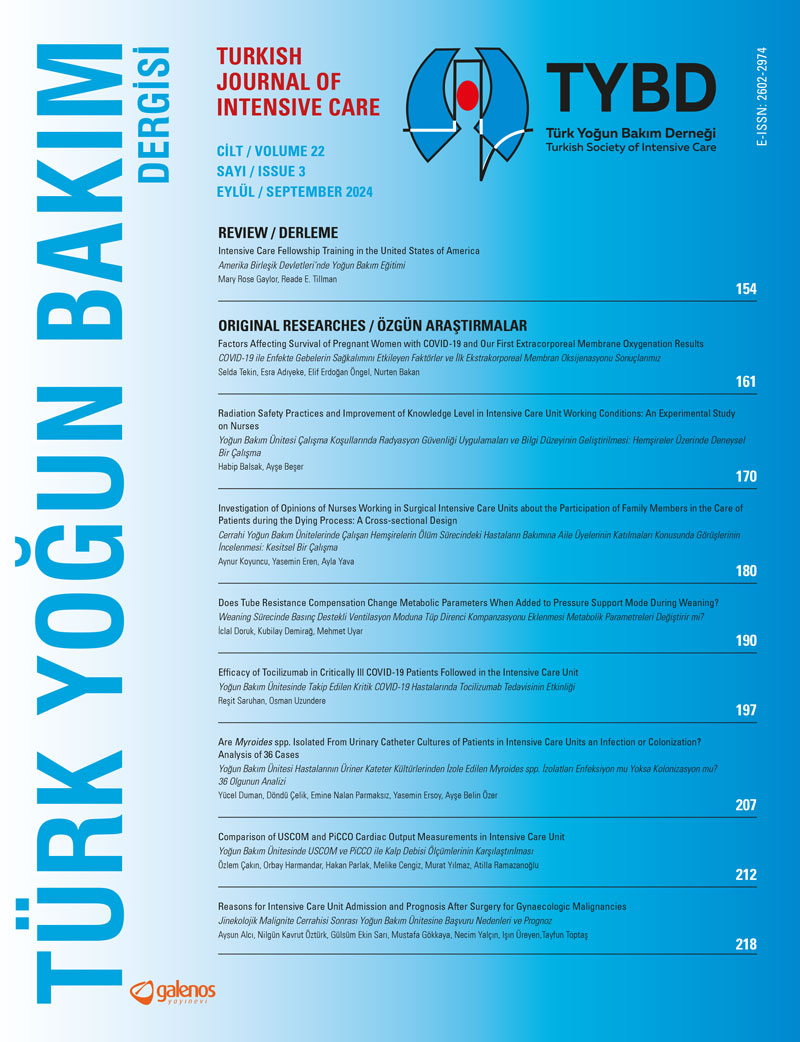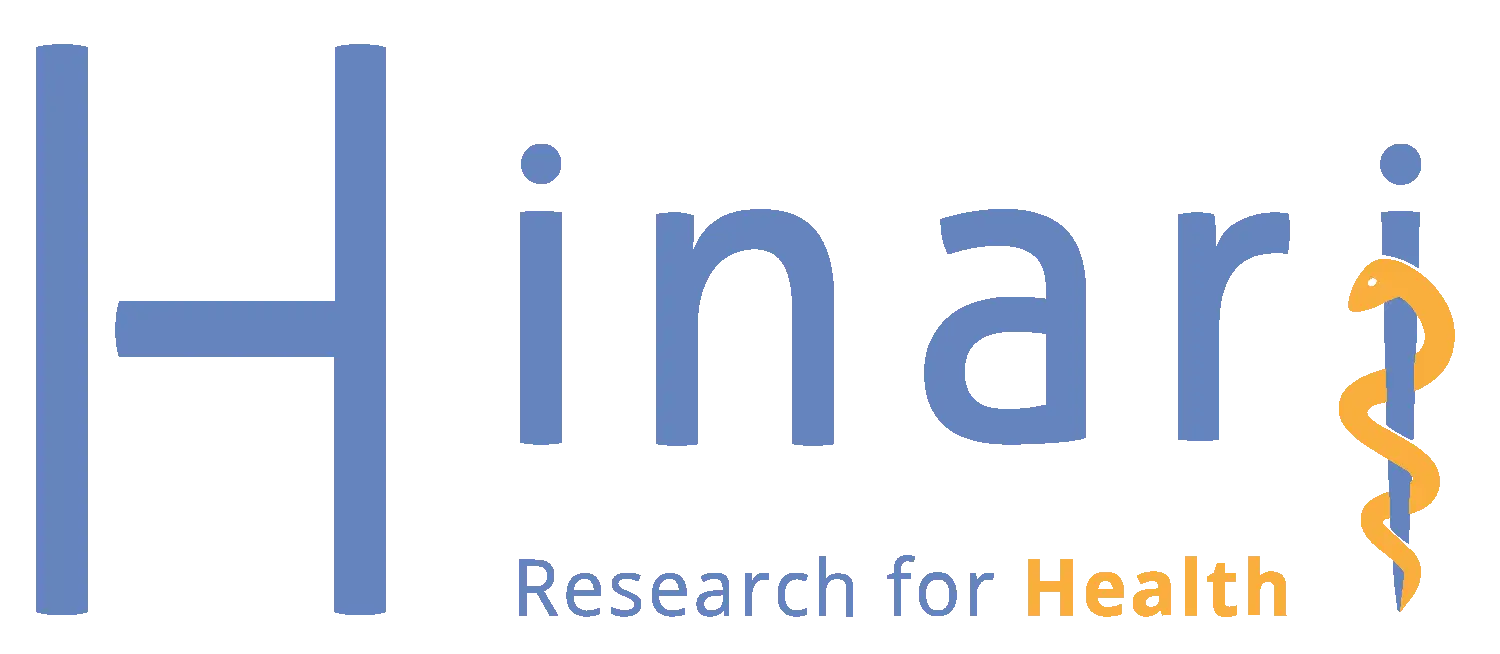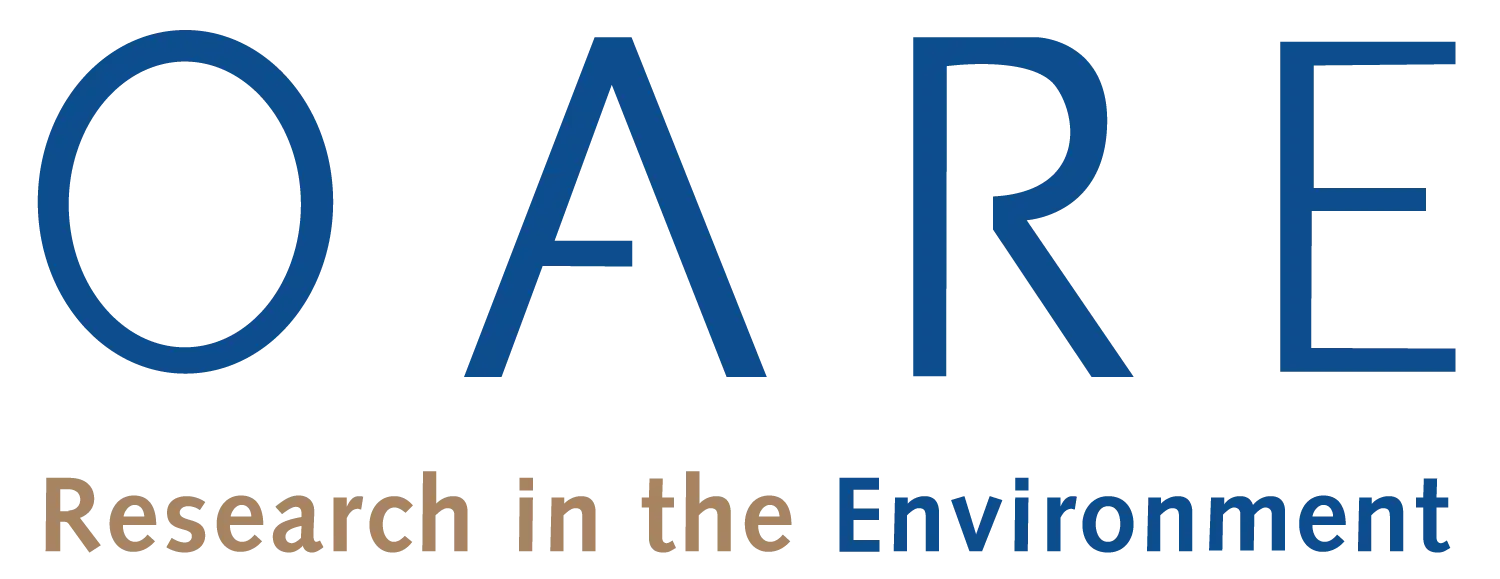Öz
Amaç
Çalışmamızda weaning planlanan hastalarda basınç destekli ventilasyon moduna (PSV) tüp direnci kompanzasyonu (TRC) eklenmesinin metabolik parametreler üzerinde etkilerinin araştırılması amaçlanmıştır. PSV ve PSV + TRC modları, oksijen tüketimi (VO2), enerji tüketimi (ET) ve karbondioksit üretimi (VCO2) ölçülerek karşılaştırıldı.
Gereç ve Yöntem
Çalışmamız prospektif, randomize, crossover bir çalışmadır. Yetmiş sekiz yetişkin hasta başlangıç ventilasyon modları PSV veya PSV + TRC modu olmak üzere randomize edildi. Grup 1 PSV modu ile ventilasyona başlanan daha sonra PSV + TRC modunda ventilasyona devam edilen hastalardan, grup 2 ise önce PSV + TRC modu ile ventile edilen daha sonra PSV modu ile ventilasyona devam edilen hastalardan oluştu. Otuz dakikalık (dk) monitorizasyon ve stabilizasyonun ardından indirekt kalorimetre bağlanarak 30 dk boyunca 5 dk bir metabolik parametre ölçümü yapıldı ve son ölçüm değerleri 30. dk’de kaydedildi. Hasta daha sonra ikinci tedavi moduna geçildi ve işlem tekrarlandı.
Bulgular
PSV + TRC modu ile ventilasyonun, PSV modu ile karşılaştırıldığında metabolik parametreler üzerinde hiçbir klinik etkisi olmamıştır (sırasıyla ET; 1746, 1763, VO2; 255, 260, VCO2; 206, 208; tümü p>0,05).
Sonuç
PSV moduna TRC eklenmesi, weaning hastalarında gaz değişimi, hemodinamik değişkenler veya metabolik parametrelerde herhangi bir değişikliğe neden olmadı.
Anahtar Kelimeler: İndirekt kalorimetre, basınç destekli ventilasyon, tüp direnç kompanzasyonu, solunum işi
Referanslar
- Tarogaard M, Freundlich M, Rasmussen BS. Respiratoraftrapning er en vigtig del af selve respiratorbehandlingen [Weaning from mechanical ventilation is an important part of the ventilation process]. Ugeskr Laeger. 2015;177:952-5.
- MacIntyre NR. Respiratory mechanics in the patient who is weaning from the ventilator. Respir Care. 2005;50:275-86.
- Cohen JD, Shapiro M, Grozovski E, Lev S, Fisher H, Singer P. Extubation outcome following a spontaneous breathing trial with automatic tube compensation versus continuous positive airway pressure. Crit Care Med. 2006;34:682-6.
- Butler R, Keenan SP, Inman KJ, Sibbald WJ, Block G. Is there a preferred technique for weaning the difficult-to-wean patient? A systematic review of the literature. Crit Care Med. 1999;27:2331-6.
- Brochard L, Rua F, Lorino H, Lemaire F, Harf A. Inspiratory pressure support compensates for the additional work of breathing caused by the endotracheal tube. Anesthesiology. 1991;75:739-45.
- Shapiro M, Wilson RK, Casar G, Bloom K, Teague RB. Work of breathing through different sized endotracheal tubes. Crit Care Med. 1986;14:1028-31.
- Fabry B, Guttmann J, Eberhard L, Wolff G. Automatic compensation of endotracheal tube resistance in spontaneously breathing patients. Technol Health Care. 1994;1:281-91.
- Guttmann J, Bernhard H, Mols G, Benzing A, Hofmann P, Haberthür C, et al. Respiratory comfort of automatic tube compensation and inspiratory pressure support in conscious humans. Intensive Care Med. 1997;23:1119-24.
- Fabry B, Haberthür C, Zappe D, Guttmann J, Kuhlen R, Stocker R. Breathing pattern and additional work of breathing in spontaneously breathing patients with different ventilatory demands during inspiratory pressure support and automatic tube compensation. Intensive Care Med. 1997;23:545-52.
- Lewis WD, Chwals W, Benotti PN, Lakshman K, O’Donnell C, Blackburn GL, et al. Bedside assessment of the work of breathing. Crit Care Med. 1988;16:117-22.
- Viale JP, Annat GJ, Bouffard YM, Delafosse BX, Bertrand OM, Motin JP. Oxygen cost of breathing in postoperative patients. Pressure support ventilation vs continuous positive airway pressure. Chest. 1988;93:506-9.
- Lago AF, Goncalves EC, Silva EC, Menegueti MG, Nicolini EA, Auxiliadora-Martins M, et al. Comparison of Energy Expenditure and Oxygen Consumption of Spontaneous Breathing Trial Conducted With and Without Automatic Tube Compensation. J Clin Med Res. 2015;7:700-5.
- Clapis FC, Auxiliadora-Martins M, Japur CC, Martins-Filho OA, Evora PR, Basile-Filho A. Mechanical ventilation mode (volume × pressure) does not change the variables obtained by indirect calorimetry in critically ill patients. J Crit Care. 2010;25:659.
- Uyar M, Demirag K, Olgun E, Cankayali I, Moral AR. Comparison of oxygen cost of breathing between pressure-support ventilation and airway pressure release ventilation. Anaesth Intensive Care. 2005;33:218-22.
- Oczenski W, Kepka A, Krenn H, Fitzgerald RD, Schwarz S, Hörmann C. Automatic tube compensation in patients after cardiac surgery: effects on oxygen consumption and breathing pattern. Crit Care Med. 2002;30:1467-71.
Telif hakkı ve lisans
Telif hakkı © 2024 Yazar(lar). Açık erişimli bu makale, orijinal çalışmaya uygun şekilde atıfta bulunulması koşuluyla, herhangi bir ortamda veya formatta sınırsız kullanım, dağıtım ve çoğaltmaya izin veren Creative Commons Attribution License (CC BY) altında dağıtılmıştır.






















